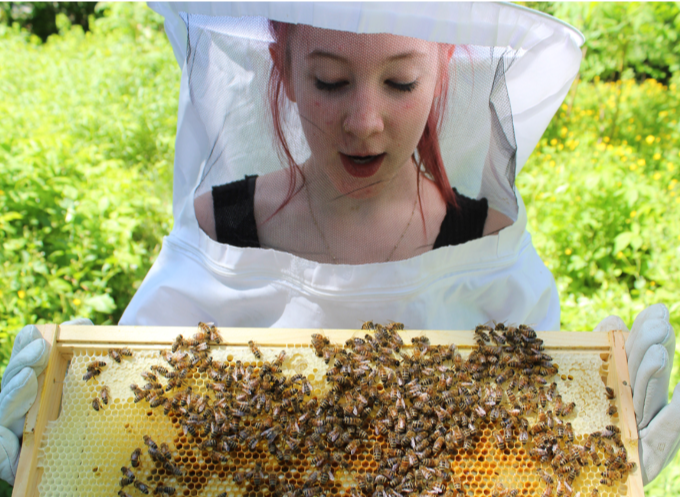October 17, 2025
Teaching
Outdoor time for students relieves stress and sets the stage for better memory, mood, and classroom behavior.

A 10th grade student holds a beehive at Maine Academy of Natural Sciences. On campus, the high school has an apiary, and juniors participate in a “beekeeping intensive” every June. Image via Evan Coleman
Outdoor time—often called “green time”—offers powerful benefits for student well-being and learning. Schools, especially those serving under-resourced communities, can play a crucial role in providing equitable access to nature, even with limited budgets and tight schedules.
Across the U.S., schools are expanding outdoor learning to improve student mental health, spark academic engagement, and close the “nature gap”—the disparity in access to green space that often leaves low-income and communities of color with fewer opportunities than wealthier, white communities.
Research consistently shows that time spent outdoors supports emotional regulation, problem-solving, academic focus, and higher test scores. Experts emphasize that even small green spaces—a single tree, garden bed, or pocket park—can make a meaningful difference.
"Communities of color are three times more likely, at 74%, than white communities (23%) to live in nature deprived areas, defined as places with less nature than the state average. About 70% of low-income communities live in nature-deprived areas, which is 20% higher than those with higher economic stability, according to a 2020 study."
"While children are spending less time outdoors, they’re also spending over seven hours in front of cellphones and computers, according to the National Recreation and Park Association. It’s a mental health double-whammy as studies show that excessive screen time overloads the sensory system and heightens stress reactions while time outside has the opposite effect on the brain."
ARTICLE: From Screen Time to ‘Green Time’: Going Outside to Support Student Well-Being




